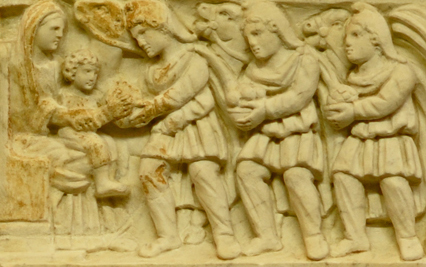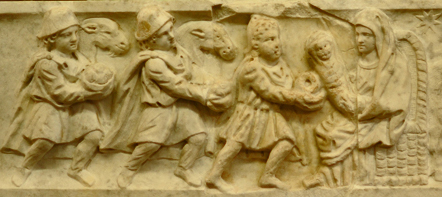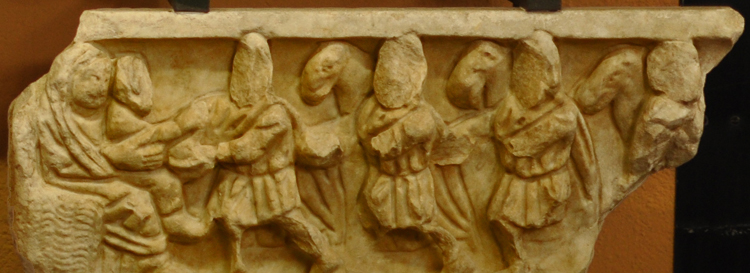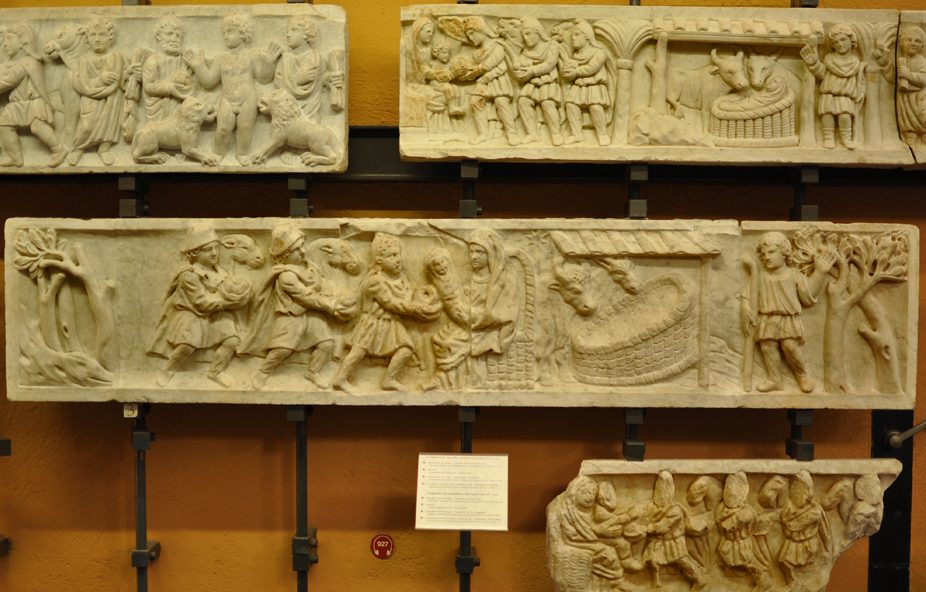


Sarcophagus Fragments with the Magi

4th century
Museo Pio Cristiano, Vatican City
The three Magi fragments exemplify the standard iconography of the Epiphany in the 4th century. Three Magi arrive at the stable in a horizontal line and bow slightly toward the child, their arms extended to offer the gifts. In the background three camels repeat the horizontal line. In the middle fragment the heads are portrayed differently, but otherwise the men are little distinguished from each other. They are not kings. They wear ordinary tunics over trousers, which at the time were considered barbarous. Their Phrygian caps denote their origin in the East and in Rome were given to slaves upon manumission.
The first mage offers the baby a wreath. The others have a bowl of balls and what is perhaps an incense jar. The baby is swaddled in the second image and wears a simple tunic in the others. He receives the gifts while on the lap of his mother, who sits on a chair or throne. In the top fragment the throne is made of stone; in the others, of wood pieces plaited like the manger. Behind the throne in the second fragment is the Star of Bethlehem.
View this image in full resolution
Detail images:



Photographed at the museum by Richard Stracke, shared under Attribution-NonCommercial-ShareAlike license.